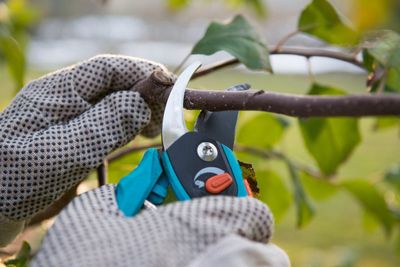Understanding Different Types of Hand Pruners
When to use hand pruners depends on the type of pruner and what is in need of being pruned. Here is a quick rundown of common pruners for gardening. Bypass pruners make a precise, clean cut that when held properly, prevents damage to live wood. They are best for smaller branches measuring less than ½ inch (1.5 cm.) in diameter. Anvil pruners are great for cutting old, tough, or brittle deadwood, but not so ideal for live wood because the scissor-like action may damage live tissue on each side of the blade. Anvil pruners are also good for cutting branches into smaller chunks for disposal, and also for cutting back or deadheading tough perennials. Ratchet pruners are much like anvil pruners, but they have a mechanism that cuts the wood in stages. This makes them a good choice for gardeners with a lot of pruning, or those with arthritic or small hands. They are also easier on the wrists. Double-cut pruners have two blades that meet in the middle, but a slight offset prevents them from grinding into one another. Double cut pruners are versatile tools suitable for trimming delicate stems or making clean cuts in living, green branches or dead wood. Loppers, or long handled pruners, are used primarily for removing woody stems measuring an inch (2.5 cm.) or less in diameter. The long handles offer good leverage and allow you to reach higher branches.
